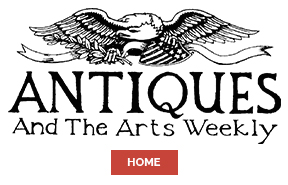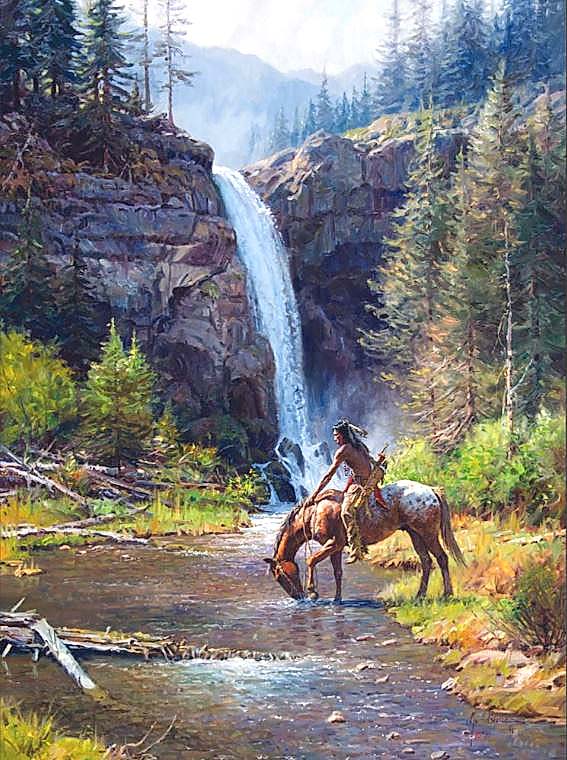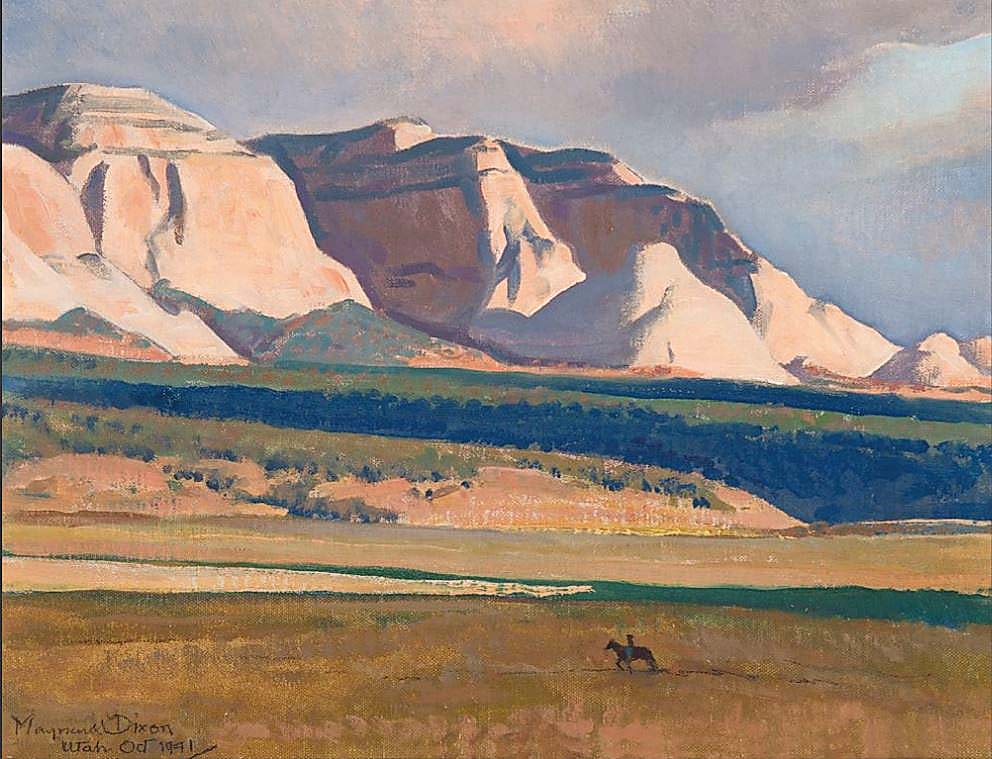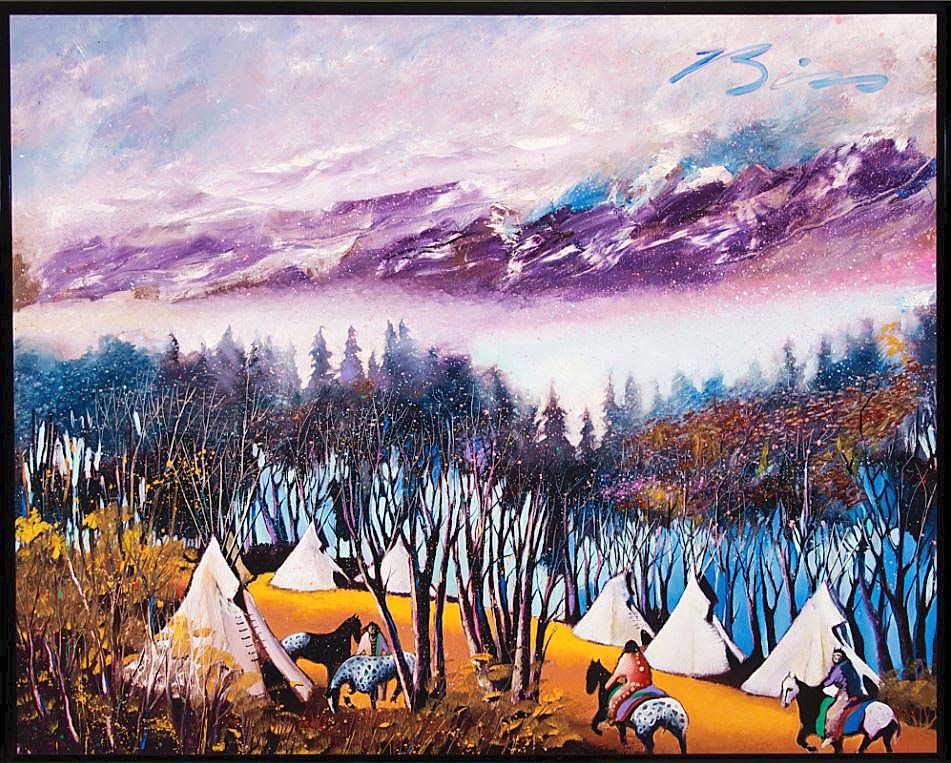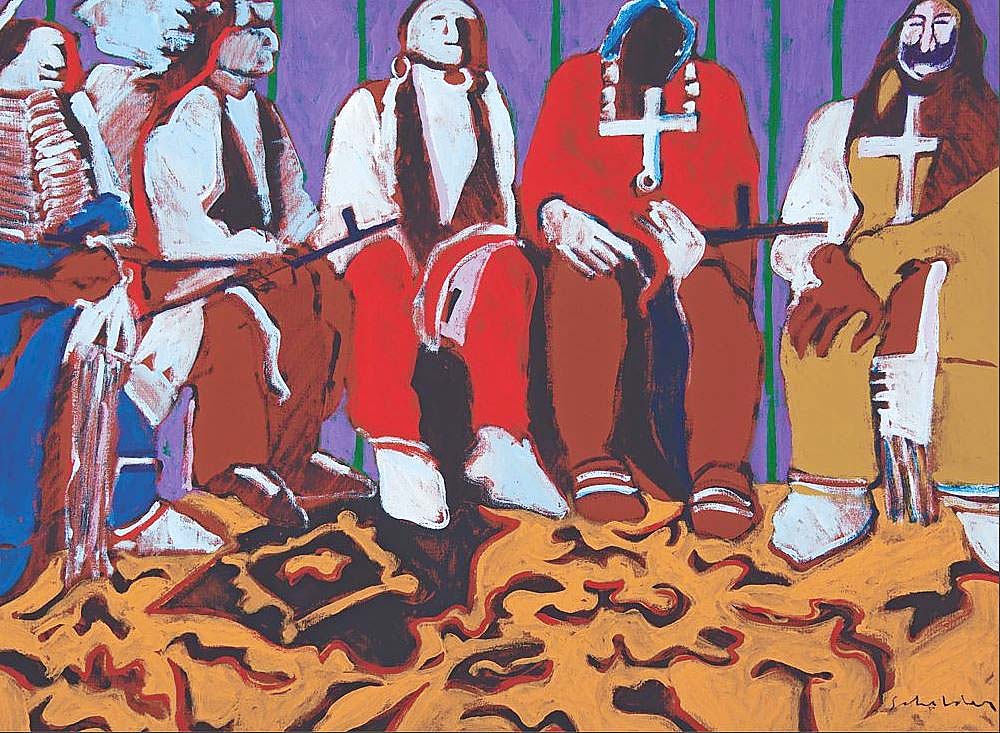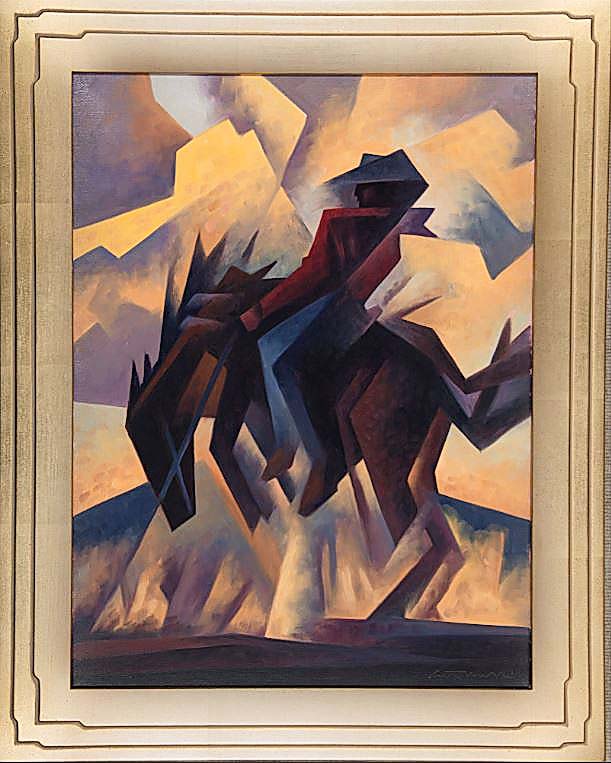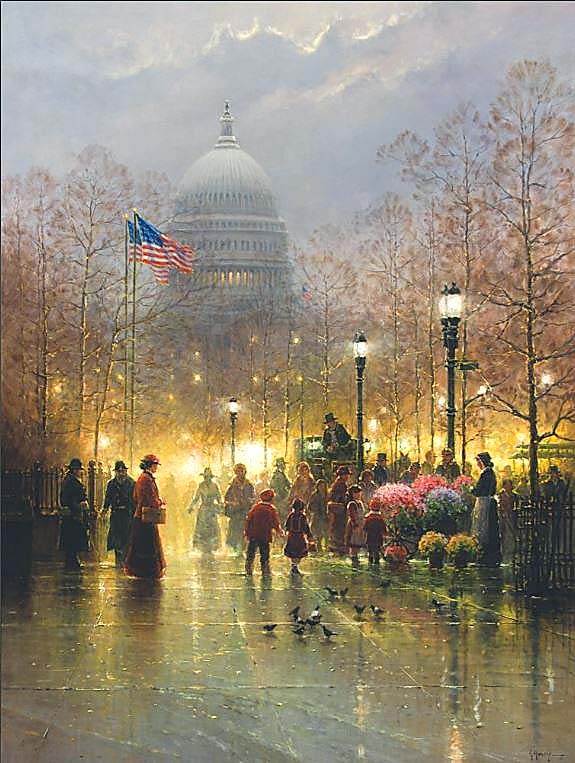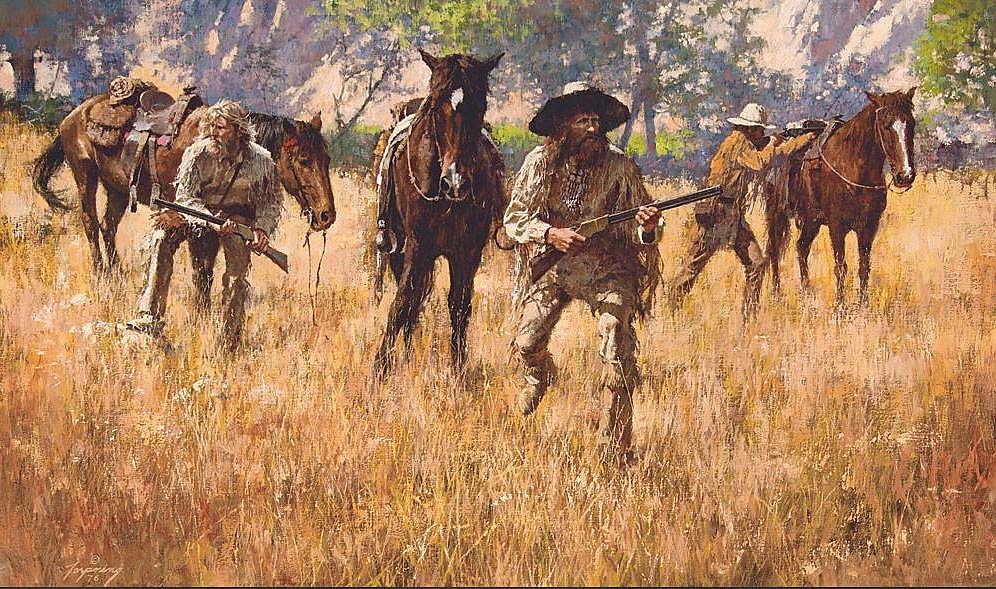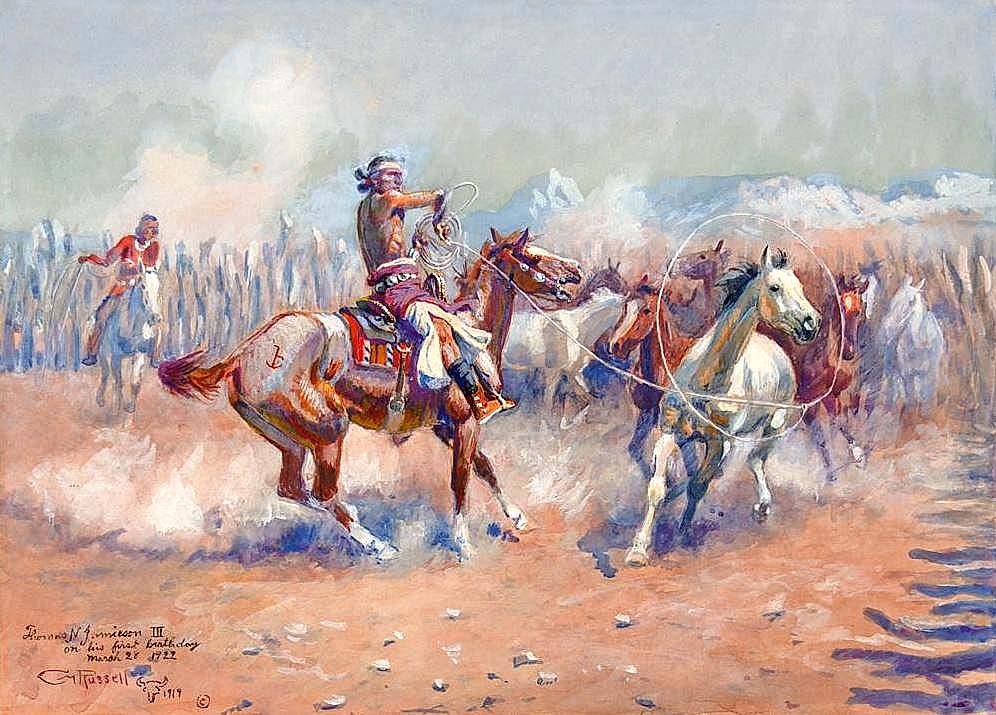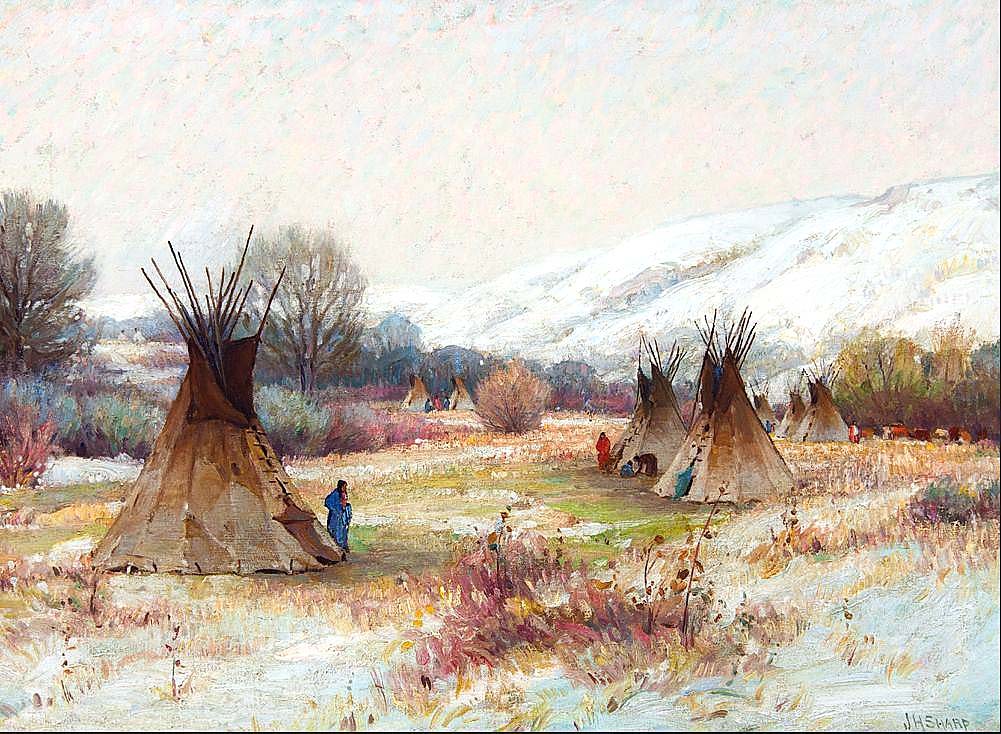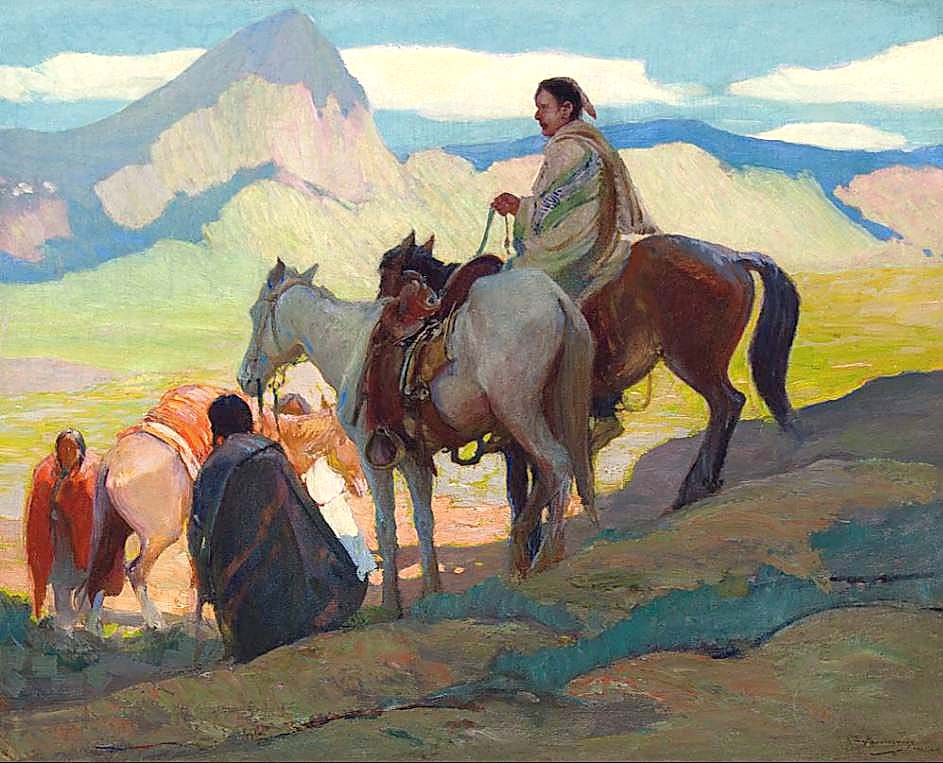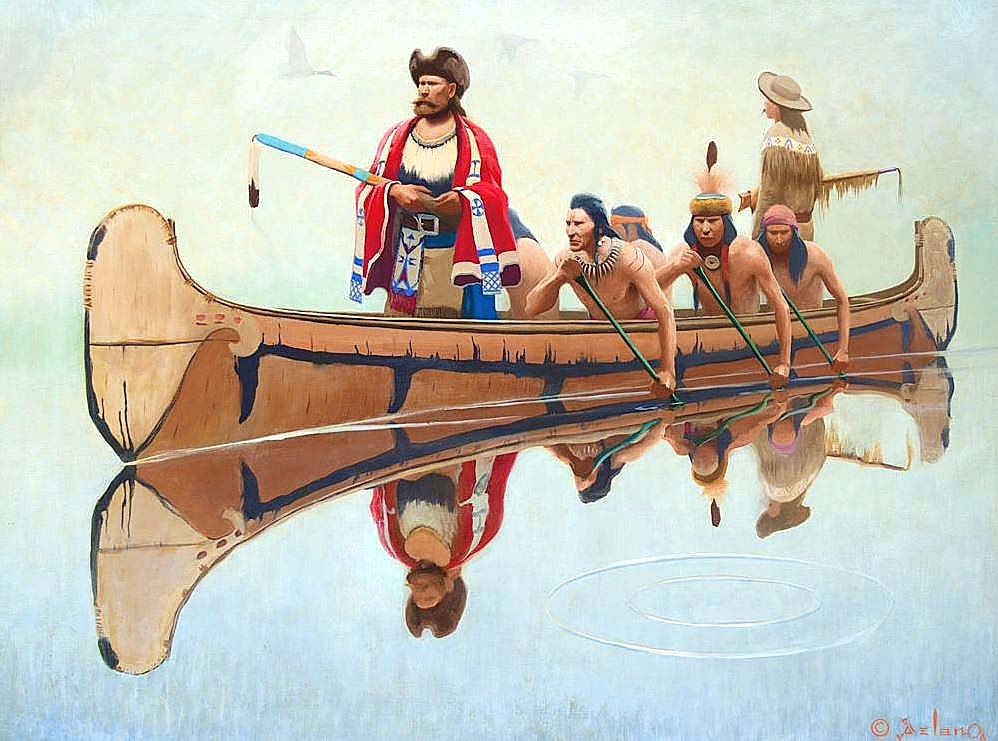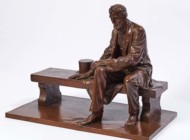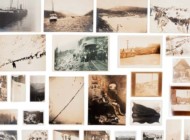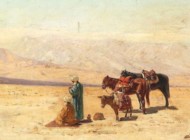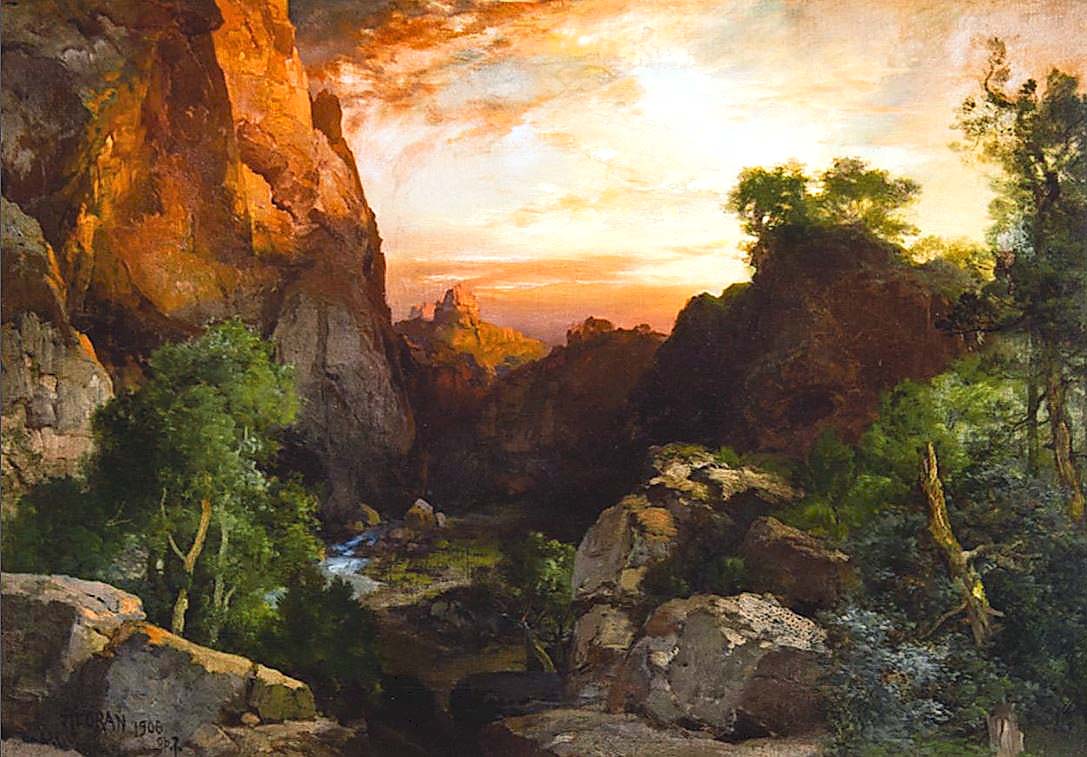
Earning $725,400 and the highest price of all was “On the Hance Trail-Grand Canyon of the Colorado River, Arizona” by Thomas Moran, 1906, oil on canvas, 14½ by 20 inches (25 by 31 inches framed) ($750,000-$1,000,000).
Review by Madelia Hickman Ring
SCOTTSDALE, ARIZ. — The team at Scottsdale Art Auction (SAA), led by co-partners Brad Richardson and Michael Frost, launched the first of its two annual sales April 11-12. On the first day, works of comparatively modest value crossed the block with prices realized spanning from $585 to $152,100. The following day, the 62-lot estate collection of collector, dealer and Maynard Dixon scholar, A.P. Hays (1930-2025) kicked the day off, with the day culminating in a final 222-lot session that achieved values spanned $1,521 to $725,400. Antiques and The Arts Weekly wrangled some commentary on the sale from Richardson.
“We feel very fortunate and blessed. The room was full; we had about 400 bidders, including many new ones. The first session did phenomenally well — we passed only a couple of the lots — and the A.P. Hays collection was 100 percent sold. By the end, about 98 percent of all lots sold, and we beat our $11 million high estimate with a $15 million total. Seventy-two percent of our lots sold at or above estimates. Based on the response to this sale, and considering the economy, I feel strongly that Western art is a very solid market. A lot of work coming to the market is being absorbed, collectors are enthusiastic and the field of contemporary Western art has a lot of energy.” He confirmed that while they had some international interest, the Western art market continues to be dominated by US buyers.
Though the auction featured many large works, the largest price ($725,400) was realized by a comparatively small — 14½ by 20-inches — oil on canvas composition titled “On the Hance Trail-Grand Canyon of the Colorado River, Arizona” by Thomas Moran. Painted in 1906, the subject was one of the artist’s favorites, and the lot will be included in Stephen L. Good and Phyllis Braff’s forthcoming catalogue raisonné for the artist.
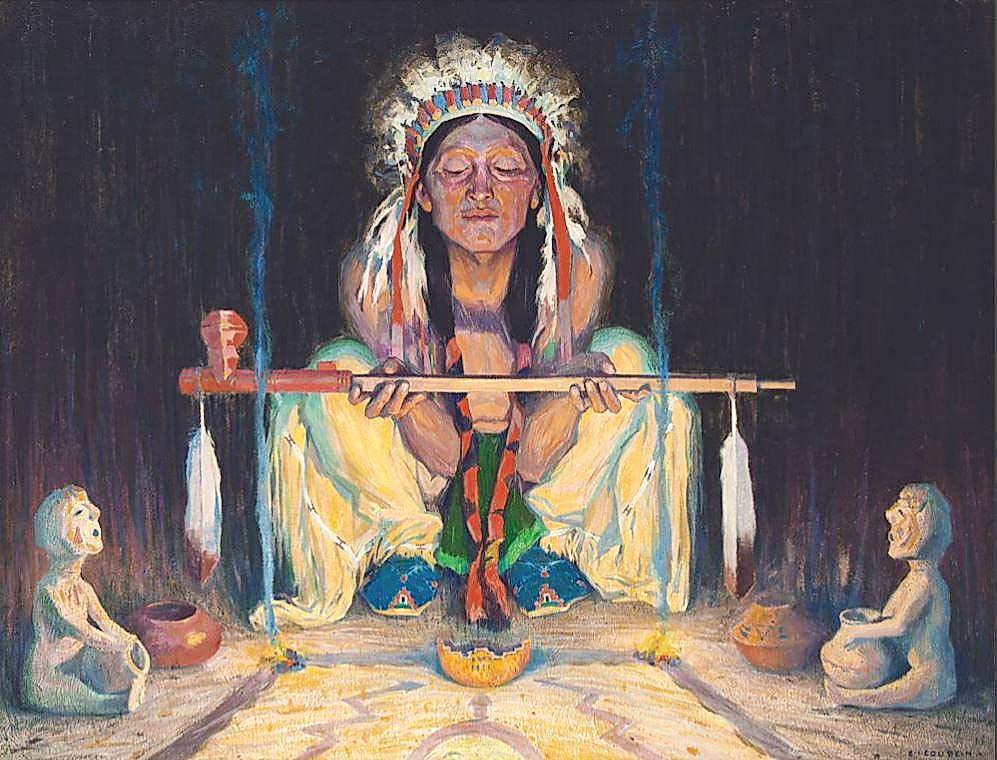
“Offering to the Great Spirit” by Eanger Irving Couse, oil on canvas, 35 by 46 inches (45 by 56 inches framed), achieved $409,500 ($400/600,000).
Many of the works of Eanger Irving Couse (1866-1936) are known for their intimate portrayals of native spirituality and daily life. Collectors of the Taos-based artist had three opportunities to acquire his pieces, which were led at $409,500 by “Offering to the Great Spirit,” a rare forward-facing and symmetrical composition that had been included in the Dallas Museum of Art’s 1986 exhibition “Visions of the West: American Art from Dallas Private Collections” and the corresponding museum catalog.
According to SAA, “although G. Harvey is known widely in the West for his images of working cowboys and Texas Hill Country, the prominent painter was quite prolific in the genre of city scenes far removed from the West.” One such city scene achieved a third-place finish: “The American Dream,” a 1991 scene of the US Capitol building that exceeded expectations when it sold for $374,400.
The focus shifted back to the West in “Wind River Country-Wyo” by Joseph Henry Sharp (1859-1953), a depiction of the Shoshone people that probably “originated from Sharp’s stay on the Crow Agency in Montana.” Consigned to auction from a Wyoming private collection, it also surpassed its high estimate, realizing $362,700.
Richardson considers Charles M. Russell (1864-1926), Frederic Remington (1861-1909) and Maynard Dixon (1875-1946) to be among the most influential Western artists, notably because the evolution of the phases of each of their careers was so successful. Topping a small selection of works by Russell was “Navajo Wild Horse Hunters,” a watercolor and gouache on paper picture executed in 1919 that brought $315,900. Of added interest was its inclusion in the Amon Carter Museum of American Art (Fort Worth, Texas) exhibition and catalog for “Romance Maker: The Watercolors of Charles M. Russell” and B. Byron Price’s Charles M. Russell: A Catalogue Raisonné (University of Oklahoma Press, 2007).
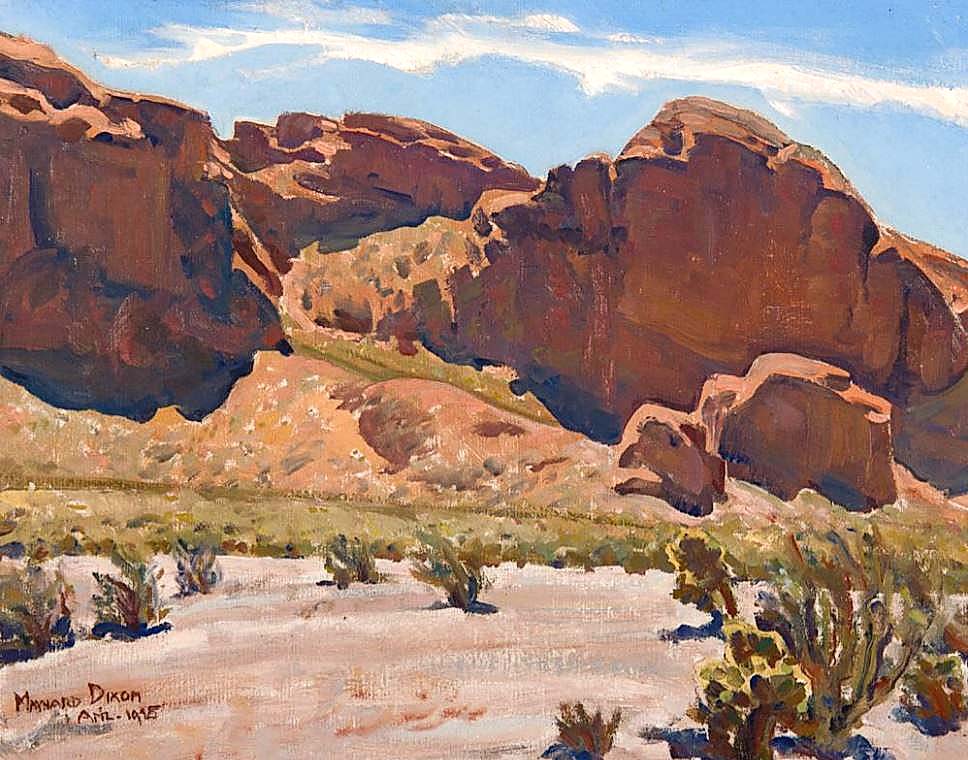
The top lot of the Hays collection was “Desert Rocks No. 2 / Camelback Mountain” by Maynard Dixon, 1925, oil on canvas mounted to board, 16 by 20 inches, which closed at $152,100 ($60/90,000).
Arguably one of the largest collections of works by Maynard Dixon to come to market at once was that of A.P. “Abe” Hays, which comprised 60 of the 62 lots offered in a special session on the second day. Despite some concerns about flooding the market — Richardson said he’d had multiple conversations about that with “many dealers from multiple states” — in the end, the selection offered a broad range of subjects and media that allowed for buyers at every price point to participate. The two top-selling pieces from the Hays collection both exceeded expectations. Yielding the highest of the session was “Desert Rocks No. 2 / Camelback Mountain,” an April 1925 oil on canvas with a label on the back from Arizona West Galleries (Scottsdale), which finished at 152,100. It was followed at $99,450 by “Mesa Toward Sunset,” a later landscape completed in 1941; notations on the back indicated it had once been owned by Dr and Mrs Walter Farr of Salinas, Calif., and featured in a 2020-21 exhibition at Scottsdale’s Museum of the West.
If Dixon’s “Mesa Toward Sunset” represented a work painted at the end of the artist’s career, “Making a Stand” by Howard Terpning (b 1927) was painted 1976, at the very start of his profession as an artist The auction catalog noted it revealed Terpning’s “masterful way of painting light” and it finished for $269,100.
Oscar E. Berninghaus’ (1874-1952) “The Edge of the Foothills” was described in the catalog as capturing “one of the common themes of the great Taos painter’s works: quiet human moments framed against the grand majesty of nature.” When Scottsdale Art Auction previously auctioned the picture in 2005, it realized $201,600; offered in this sale, it traded at the improved price of $257,400.
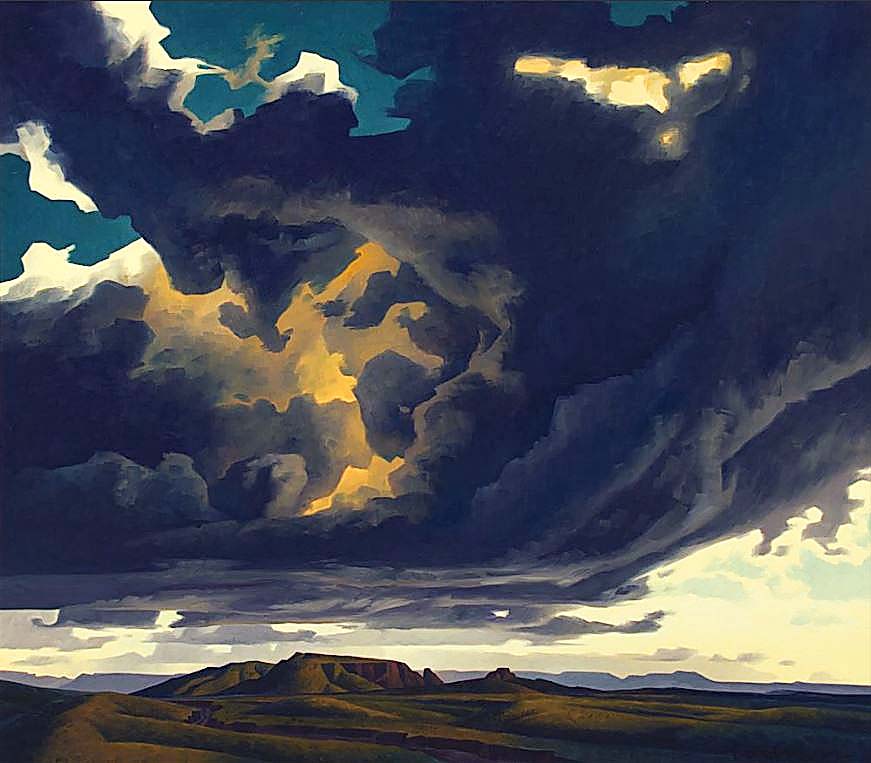
“Eye of the Storm” held the world auction record for Ed Mell for about 24 hours, at $117,000, before it had to defer that honor to “Western Bronc,” also in the sale. The oil on canvas painting measured 42 by 48 inches and was painted in 1991 ($35/45,000).
It is not unusual for Scottsdale Art Auction to set new auction records; this sale was no exception. Richardson noted the auction broke the record twice for Ed Mell (1942-2024), achieving $117,000 in the first session for “Eye of the Storm,” then on the second day, when “Western Bronc” brought $122,850. “Eye of the Storm” had been painted in 1985 and included among its pedigree a private Oregon collection and inclusion in Donald J. Hagerty’s Beyond the Visible Terrain: The Art of Ed Mell (Flagstaff, Ariz., 1996). Painted in 2007, “Western Bronc” was described as a “more abstracted, even cubist, version of Mell’s most famous work, ‘Jack Knife.’”
Another record-setting work was “High Mountain Camp,” by Earl Biss (1947-1998), a contemporary Indigenous artist who was born in Washington state and raised on the Crow reservation in Montana and who studied under Fritz Scholder, Charles Loloma and Allan Houser.
A representative for the auction house confirmed a total of 20 new world auction records had been set, including for Ray Roberts’ (b 1954) “Canyon Dweller” ($22,230); Brandon Bailey’s (b 1984) “When the Night Winds Blow Up a Squall” ($29,250); Colt Idol’s (b 1992) “Prairie Stories” ($38,025); Phil Epp’s (b 1946) “Looking Back” ($38,025); David Mann’s (b 1948) “Native Moon” ($49,725); Scott Rogers’ (b 1961) “Vaquero” ($64,350) and Charles Nahl’s (1818-1878) “Joaquin Murieta” ($111,150).
Prices quoted include the buyer’s premium as reported by the auction house.
Scottsdale Art Auction’s next sale is scheduled for August 23. For further information, 480-945-0225 or www.scottsdaleartauction.com.
